One little story about John Pawson has always tickled me. It’s the fact that the Cistercian monks who brought the architect his biggest commission in 1999 – a huge abbey complex in the Czech Republic – came to his work via pictures of the Manhattan boutique he’d designed for Calvin Klein. That his work can somehow straddle the materialistic and the mystical is intriguing. The minimalist style he espouses is instantly recognisable: a radically simple environment with white walls, straight lines and invisible junctions, where visual pleasure comes from a foregrounding of materials and the sculpting of light. Because it admits of no compromise, it doesn’t come cheap, and one commentator has suggested that its appeal to the wealthy is that it frees them from the unbearable freight of all the things they possess. To live in one of his interiors, wrote Bruce Chatwin, an early client, ‘requires a certain act of will. What it does not require is a hair-shirted mentality.’ For Pawson, minimalism is neither prescriptive nor empty interior decoration; rather his designs are intimately tailored to the lives of his clients, their patterns of use.
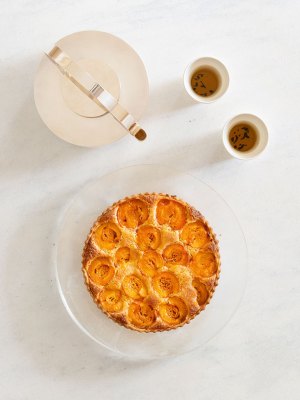
Apricot frangipane tart. Photo: Gilbert McCarragher
One can see this forensic approach at work in a lyrical new cookbook that he and his wife of 32 years, Catherine, have produced from their country base, Home Farm, in an Oxfordshire hamlet. In 2013, they bought the largely derelict complex of 17th- and 18th-century farm buildings with a view to enticing friends and family to stay for ‘sustained periods’. Pawson’s vision was to connect the farmhouse to the barn, stables and hayloft, in one ‘unfolding rhythm’ 50m long. That distance called for two kitchens – one in the wintry womblike end and one in the lofty barn with its refectory table, Hans Wegner chairs and dramatic floor-to-ceiling sash window. Yet a third kitchen occupies the self-contained wain house for guests. This overlooks a medieval carp pond, where a one-ton Carrara-marble picnic table sits at water’s edge.
Although the book is billed as a collaboration, what emerges is that Catherine Pawson, a Colefax & Fowler-trained interior designer, does virtually all the cooking, while her husband brings to the table his well-known philosophy and starry name. One picture has him on his feet spooning some morsel on to his wife’s plate like a languid butler. Yet we know from his first collaboration with the cookery writer Annie Bell (Living and Eating, 2001) that his opinions on culinary matters are strong and legion. Then, if he wasn’t ventilating on decor – ‘flowers on tables distract from both food and people’ – he was telling the Guardian’s Tamsin Blanchard that if he had his way he would eat only white food (cheese, turbot, rice and vanilla were at that time his great loves) ‘from large, off-white, Wedgwood Queensware plates’.
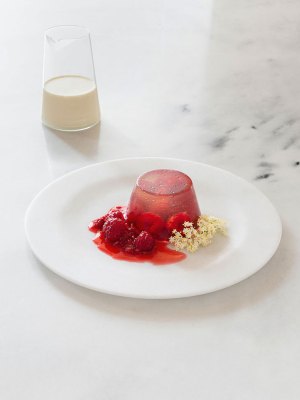
Elderflower and raspberry jelly. Photo: Gilbert McCarragher
Pawson has argued that everything he does, from a nickel salt cellar to a sinuous bridge in Kew Gardens, carries the essence of his entire philosophy. Food is no exception. In the River Cafe mould, these recipes follow the seasons, and dishes are presented unfussily, often with minimal intervention – spring carrots with tahini, for instance, or griddled peach, mozzarella and rocket salad. Ottolenghi’s roast chicken and three-rice salad, a family favourite, is part of a summer picnic, served with baba ganoush, homemade flatbreads and followed by gooseberry fool. The squashes, shellfish and poached quince of autumn give way to ribollita, slow-cooked shoulder of lamb and profiteroles at the end of the year. Catherine’s influences – from Skye Gyngell to Prue Leith – are generously signposted. In descriptions that are as precise and poetic as Gilbert White’s, we learn about expeditions to collect sprays of elderflower, to gather ramsons in ancient woodland – wild garlic pesto features heavily – or to harvest comice pears from their centuries-old orchard. The recipes themselves are as obsessively engineered as the Pawson-designed bowls and cutlery, cookware and marble vessels that serve as props in the accompanying photographs.
Preparation and graft, gadgetry and mess are nowhere to be seen – hidden away behind some shadow gap, perhaps. Four generations of Pawsons seem to intermingle as smoothly as the ragbag of domestic and agricultural structures from four different centuries. Epic stories of acquisition often accompany minimalist architecture: take the bathtub in a Pawson-designed west London terrace made of stone located in just one quarry in the Dolomites, which had to be winched through the roof. At Home Farm, similarly, the elm floors were a procurement nightmare for the timber merchants. Building is never minimal, and likewise I don’t fully buy the unruffled assembly of these ingredients into feasts – however immaculate the results.
Home Farm Cooking by Catherine and John Pawson is published by Phaidon.
From the June 2021 issue of Apollo. Preview and subscribe here.
Unlimited access from just $16 every 3 months
Subscribe to get unlimited and exclusive access to the top art stories, interviews and exhibition reviews.

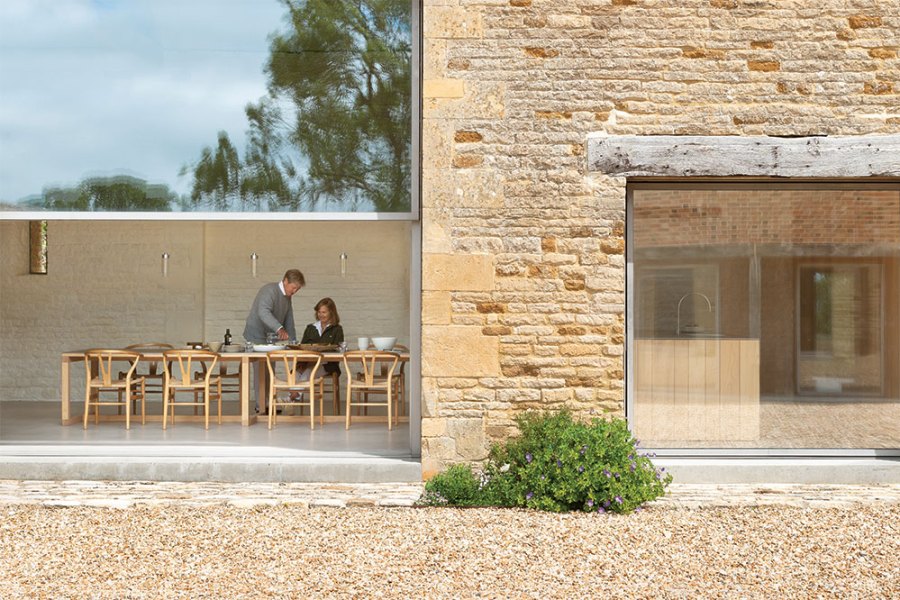
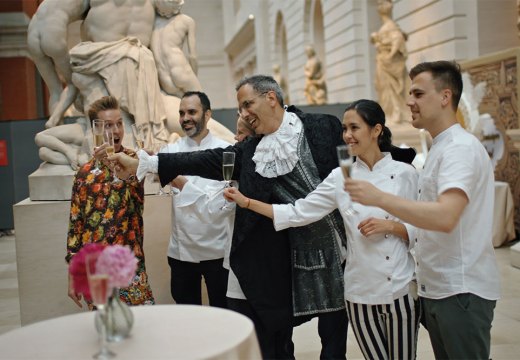
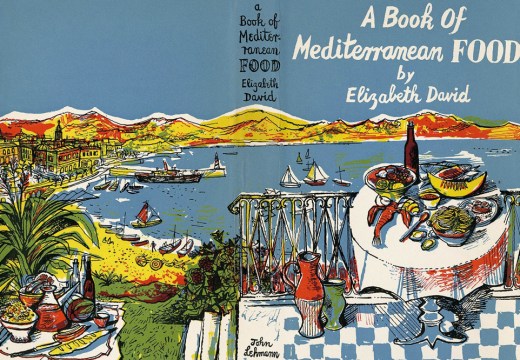
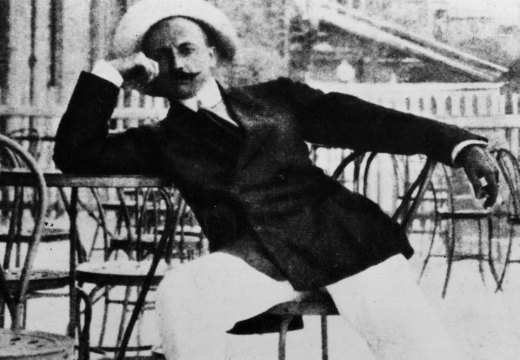









![Masterpiece [Re]discovery 2022. Photo: Ben Fisher Photography, courtesy of Masterpiece London](http://www.apollo-magazine.com/wp-content/uploads/2022/07/MPL2022_4263.jpg)
It’s time for the government of London to return to its rightful home